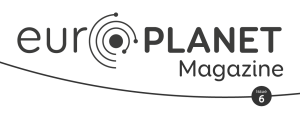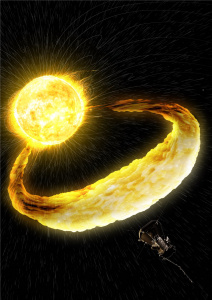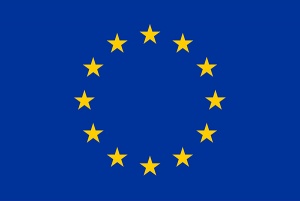Machine Learning for a Data Driven Era of Planetary Science
Stavro Ivanovski (INAF-Trieste Astronomical Observatory, Italy), Angelo Pio Rossi (Constructor University, Germany), Jeronimo Bernard-Salas (ACRI-ST, France), and Anita Heward (DFET, UK) look at how Machine Learning (ML) is revolutionising planetary science.
Read article in the fully formatted PDF of the Europlanet Magazine.
T
raditionally, science starts with a hypothesis. We develop a theory that we test experimentally, producing data; we analyse the data and, hopefully, the process results in new knowledge.
The advent of Machine Learning (ML) has enabled a new approach, known as data-driven science. Using the wealth of data sets and streams available, ML can explore the data to find a pattern or commonality. Out of these initial steps comes a hypothesis that can be tested through data analysis, which again, hopefully, leads to new understanding. Additionally, clustering or fusing datasets can reveal connections or knowledge that are not recognisable in the individual datasets.
Our Solar System contains an exotic range of objects and environments ranging from vast gas giants, like Jupiter and Saturn, to the small rocky and icy bodies of asteroids and comets. Even the planets termed ‘terrestrial’ are a very mixed assortment that includes the habitable Earth but also the hellishly hot Venus, scorched Mercury and cold, arid Mars.
Over the past three decades, our knowledge of planetary systems has extended to those around other stars; these ‘exoplanetary’ systems have been found to contain many strange objects that are not found in our Solar System, such as lava planets, ocean worlds and ‘hot-Jupiters’.
In recent years, planetary science has experienced an exponential growth of the volumes of data available from diverse sources, including space missions, ground-based telescopes, computer modelling, and laboratory and field experiments. To go through and analyse the vast archives of data collected from all these sources, new methods and approaches are required. The introduction of ML tools and algorithms means not only that all the data can be investigated, but that datasets can be combined and mined to find complex correlations, to detect anomalies, faults or missing information, and to maximise the exploitation of data from planetary research to date.
The Europlanet 2024 Research Infrastructure (RI) is a €10 million project, funded by the European Commission’s Horizon 2020 programme, that supports the planetary science community. The project’s core activities are to provide access to facilities, field sites and data services. However, Europlanet also provides investment through ‘Joint Research Activities’ that combine the expertise of multiple partners to create the new infrastructure and services needed to carry out world-leading planetary research. Since 2020, the project has developed ML tools to handle complex planetary data more efficiently and provide opportunities to combine and visualise multiple, diverse datasets.
This programme has been further enhanced through a collaboration with a second Horizon 2020 project, EXPLORE, which has developed applications for the exploitation of galactic, stellar and lunar data, and provides a platform for deploying and testing ML tools and services.
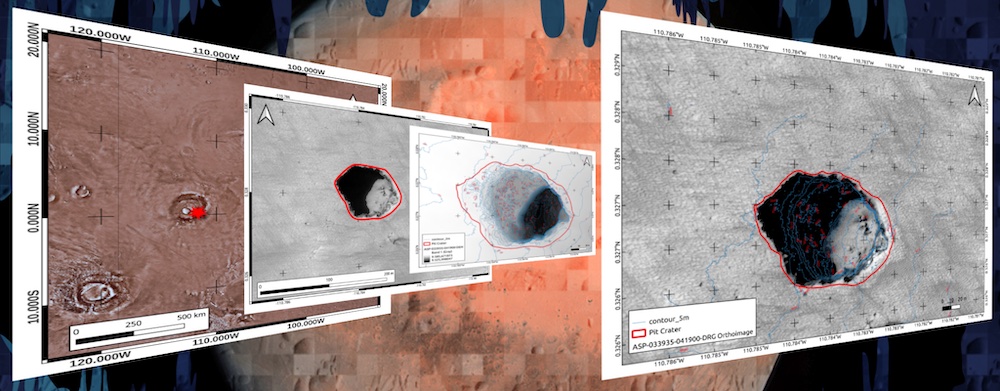
Europlanet’s ML-powered tools are based on scientific cases proposed by the community that address key challenges in planetary research. From these proposals, seven cases were chosen to follow up initially during the project, and further cases have been added over time. All the tools are open-source, ready-to-use and highly customisable, enabling other researchers to freely deploy and adapt them for their own research scenarios.
The ML-powered tools focus on three types of planetary data: time-series data, where data mining can reveal the dynamic evolution of phenomena or time dependent events; imagery, where training algorithms to recognise features can support automated mapping and classification of common characteristics; and other kinds of data, for example spectral data, where characteristics like composition or surface ages can be identified.
Tools for Time-Dependent Phenomena
The Sun emits not only heat and light, but also a stream of electrically charged particles. This ‘solar wind’ interacts with objects in its path and can potentially strip away planetary atmospheres. Earth, and other planets with a global magnetic field, are largely shielded from the effects of the solar wind. However, solar activity can result in flares, emission of solar energetic particles and eruptions of material, called coronal mass ejections, that can interact with Earth’s magnetic environment and, in severe cases, cause serious disruption to power grids, radio networks and satellites.
Europlanet has developed a suite of ML tools to support investigations of the solar wind and its effects on planetary environments over time. One tool supports forecasting the severity of a solar storm based on its magnetic orientation compared to the Earth’s magnetic field. A second tool monitors the conditions controlling emissions by high-energy particles trapped in radiation belts. A third tool automatically identifies points in data streams when an orbiting spacecraft crosses over the boundary between a planet’s protective magnetic field and the unshielded conditions of the solar wind. Collectively, this deployment of ML enhances our understanding of solar wind interactions and our ability to protect infrastructure both here on Earth and on the surface of, or in orbit around, other planets.
Tools for Identifying Hazards and Resources
Every day, about 100 tonnes of rubble or dust from space enters the Earth’s atmosphere. Most of this burns up without being seen or reaching the ground. However, larger meteors can cause fireballs that streak across the sky and some fragments can reach the ground as meteorites. Increasingly, camera networks dedicated to fireball tracking are being installed around the world, both to facilitate meteorite recovery for research purposes and to increase our understanding of impacts to support planetary defence initiatives. Europlanet has been working with the professional and amateur meteoritic research community to develop ML-powered tools that extract information from imagery of fireballs to help determine their characteristics, trajectories and potential origins.
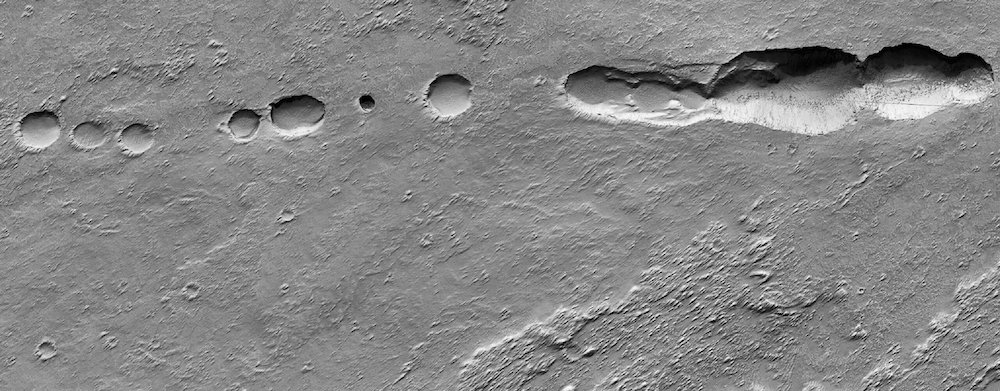
Across the Solar System, images of planetary surfaces exhibit many common features, such as pits, mounds or craters. These features can reveal a wealth of information about the formation, history and potentially useful resources of a planetary body. For example, ‘skylights’ – sinkholes into subsurface caves – on the Moon or Mars are of interest to geologists studying lava tubes and evidence of ancient volcanic activity; however, skylights are also possible entrances to protected environments where underground habitats could be built for human explorers in the future. Craters can provide a detailed chronological record of the impact history of a planetary surface, potentially going back millions or billions of years, and may also trap water ice that could be used for life support and fuel. With a return of humans to the Moon planned within two-to-three years, and international exploration strategies setting their sights on Mars, detailed and accurate mapping of surface features and resources at high resolution is essential. ML tools created by Europlanet and EXPLORE enable the automatic identification and labelling of skylights, craters, mounds and other surface features. This not only enhances the speed of the mapping process but can also add in layers of information, such as the size, depth, composition and other characteristics of the features.
ML-based tools have also been developed to automatically calculate the depth of pits by detecting their shadows and measuring the width as they appear in satellite imagery. These pits will be primary targets for future space exploration and habitability since they are present on most rocky Solar System surfaces and, besides providing shelter from radiation, they have the potential to be entrances to sub-surface cavities which could, in the case of Mars, harbour stable reservoirs of ice water.
Tools for chemical characterisation
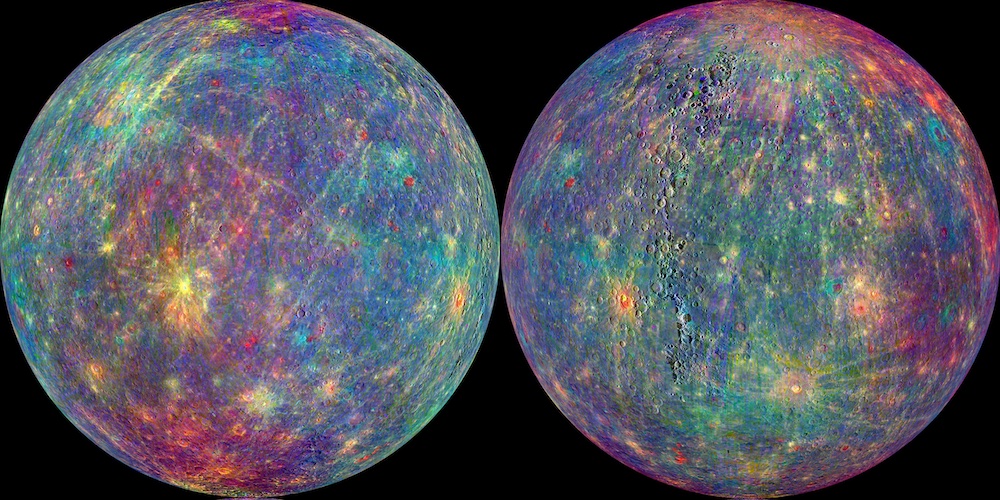
Many planetary missions carry spectrometers to gather information on the mineralogy of planetary surfaces. Minerals reflect certain parts of the electromagnetic spectrum more strongly than others depending on their chemical composition. Remote sensing data, for example detection of igneous rock-forming silicates on the surfaces of various bodies of our Solar System, can help reveal the history of formation of rocky planets such as Mars and natural satellites, such as the Moon.
To support these spectral studies, a Europlanet ML algorithm has been trained with reflectance spectra generated in laboratory experiments at the visible and infrared wavelengths that are key to unlocking surface composition. An additional bespoke tool has been trained for unsupervised classification of infrared observations by NASA’s MESSENGER spacecraft, which orbited Mercury between 2011 and 2015. With ESA’s BepiColombo mission set to arrive at the Solar System’s innermost planet in December 2025, this tool is helping BepiColombo’s spectrometer team to perform vital groundwork in identifying areas of particular interest and developing workflows for future data analysis.
Impacts to Date
The development phase of Europlanet’s ML tools is complete and training and dissemination are underway to support their adoption by the community. The synergistic collaboration between Europlanet and EXPLORE has also demonstrated the EXPLORE platform’s usefulness to the planetary community in providing a test environment to deploy ML tools and other applications. The platform fills a previously unidentified gap in supporting the development of applications to the point of maturity needed for deployment on major data hubs, such as the European Science Open Cloud (EOSC) and ESA Datalabs.
Much of the development work for the ML tools has been performed by early career researchers, enabling them to build their skills and experience, as well as their professional profile within the scientific community.
Europlanet’s ML tools have been designed for use in a wide variety of applications dealing with scientific databases. The tools are accessible in open-access repositories with documentation, numerical scripts and scientific graphs. The ML repositories are structured so that users can not only find the description of the scientific use cases with the corresponding ML techniques but also the results obtained by applying the given techniques. New users can therefore compare past outcomes of the ML training and apply them to new problems. This approach supports the spirit of independent, standalone best-practice for analysing a scientific problem.
Overall, by developing ML tools tailored to planetary science, Europlanet has cemented collaborations, started to build new user communities and developed services that are already resulting in publications. While the planetary science community could be seen as ‘late to the party’ in adopting ML, interest now is high. This couldn’t be more timely – with flagship missions to Mercury and Jupiter soon adding to the deluge of data streams, the era of data-driven science is only just beginning.
Links
Acknowledgements
Europlanet 2024 RI’s Machine Learning activity is a collaboration between IWF-OEAW, KNOW Center, the University of Passau, ACRI-ST, DLR, INAF, IAP-CAS and Armagh Observatory and Planetarium. The Project has received funding from the European Union’s Horizon 2020 research and innovation programme under grant agreement No 871149.
The EXPLORE consortium is composed of ACRI-ST, Observatoire de la Cote d’Azur, KNOW Center, Constructor University, the University of Manchester, the Dill Faulkes Educational Trust and adwäisEO, with input from Tel Aviv University. The EXPLORE Project has received funding from the European Union’s Horizon 2020 research and innovation programme under grant agreement No 101004214

